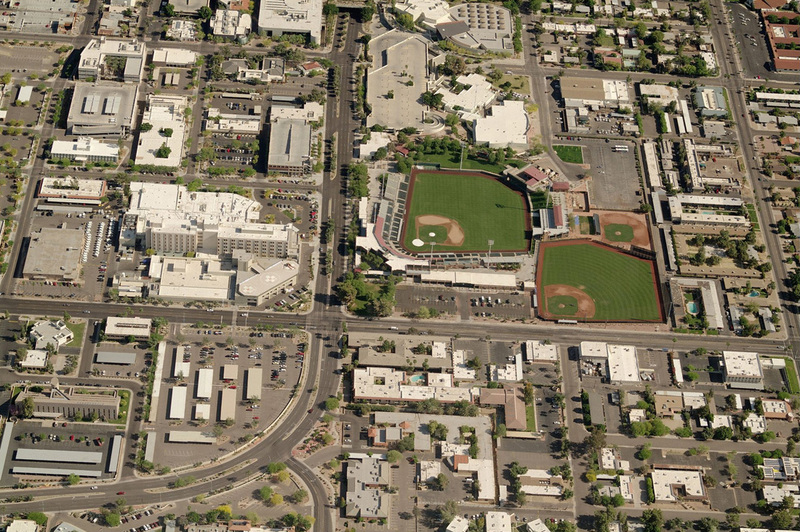The Cactus League in the City of Scottsdale
Baseball in America's Most Livable City

Scottsdale has a relatively new but rich history with the sport of baseball. Since the 1950s, Scottsdale Stadium has been pivotal in hosting both MLB and local Arizona teams, allowing Arizona residents and visitors to experience baseball, and other events, year-round.
Relative to other cities in the Valley, Scottsdale’s connection to baseball is decidedly newer. Whereas teams have been visiting and playing exhibition matches at Phoenix Municipal Stadium and Mesa’s Rendezvous Park since the early 20th century, Scottsdale has no major baseball parks to speak. However, as Arizona rose to prominence on the Spring Training circuit, Scottsdale decided to make room for America’s pastime.
On May 1, 1955, the Scottsdale Baseball Club organized with a singular goal: to build a ballpark that would attract a Major League Baseball team for Spring Training in the fledgling Cactus League. The club held its initial meetings for such a stadium at Scottsdale’s Pink Pony and eventually came up with a plan to lease land from the Civic Coordinating Council as well as to pre-sell box seats to help fund construction of the new stadium. Along with personal loans from members of the Baseball Club, construction on the 3,000-seat stadium began on June 20, 1955. Work on the stadium was completed in October of that same year, and the Stadium hosted its first exhibition match on November 20. Charlie Briley, owner of the Pink Pony and a member of the Baseball club, beamed with exuberance, stating, “It looked liked Yankee Stadium to me that day, the park was beautiful and the folks loved it.”
The Baltimore Orioles officially opened the stadium in March of 1956 by becoming the first Major League team to Spring Train in the City of Scottsdale. The entire community of Scottsdale rallied around the stadium, with local high school students often serving as ushers, Arizona Governor Ernest McFarland throwing out the inaugural first pitch, and the stadium was run and staffed by member of the Scottsdale Baseball Club. The stadium quickly became a focal point for locals. When the spring season ended, Scottsdale Stadium hosted local men’s baseball teams, allowing Arizona locals a chance to play on the same turf as the Major League clubs, something that was a great selling point for its resident club: The Scottsdale Blues.
After three years of Spring Training in Scottsdale, the Baltimore Orioles departed in 1959 to be replaced by the Boston Red Sox. The Red Sox would call Scottsdale home for 6 years, before departing as well, throwing the city of Scottsdale and the Stadium into a state of disarray. The Stadium lay vacant for the entirety of the 1966 season. It was not until the Cubs moved back to Arizona in 1967 that the Stadium saw use again as a Cactus League venue. The city of Scottsdale rejoiced in having the Cubs, a relationship that spanned over a decade until 1978 when the Cubs moved back to Mesa. To avert another tenant crisis, the Oakland A’s quickly stepped in for three spring seasons.
Since 1982 the residents of Scottsdale Stadium have been the San Francisco Giants. Disillusioned by the conditions at the deteriorating Phoenix Municipal Stadium, the Giants decided to swap locations with the Oakland A’s. However, when the Giants arrived at their new home, they found the conditions to be as bad as the ones they had left in Phoenix. While the team loved the city of Scottsdale, their dislike of the stadium was evident. The city recommended a complete tear down and rebuild of the stadium. However, nearly a decade would pass between the Giants arrival in Scottsdale and the completion of the new stadium in 1992. Designed and built by the same design firm that built Camden Yards in Baltimore, the New Scottsdale Stadium is a beautiful homage to all things baseball.
The current Scottsdale Stadium sits on the same site as the original. Tucked away in Downtown Scottsdale, the stadium is now surrounded by local art studios, restaurants, and boutique shops. While it is best known as a Cactus League venue, the stadium also hosts a number of other events, including professional soccer matches, concerts, and weddings.
Images



